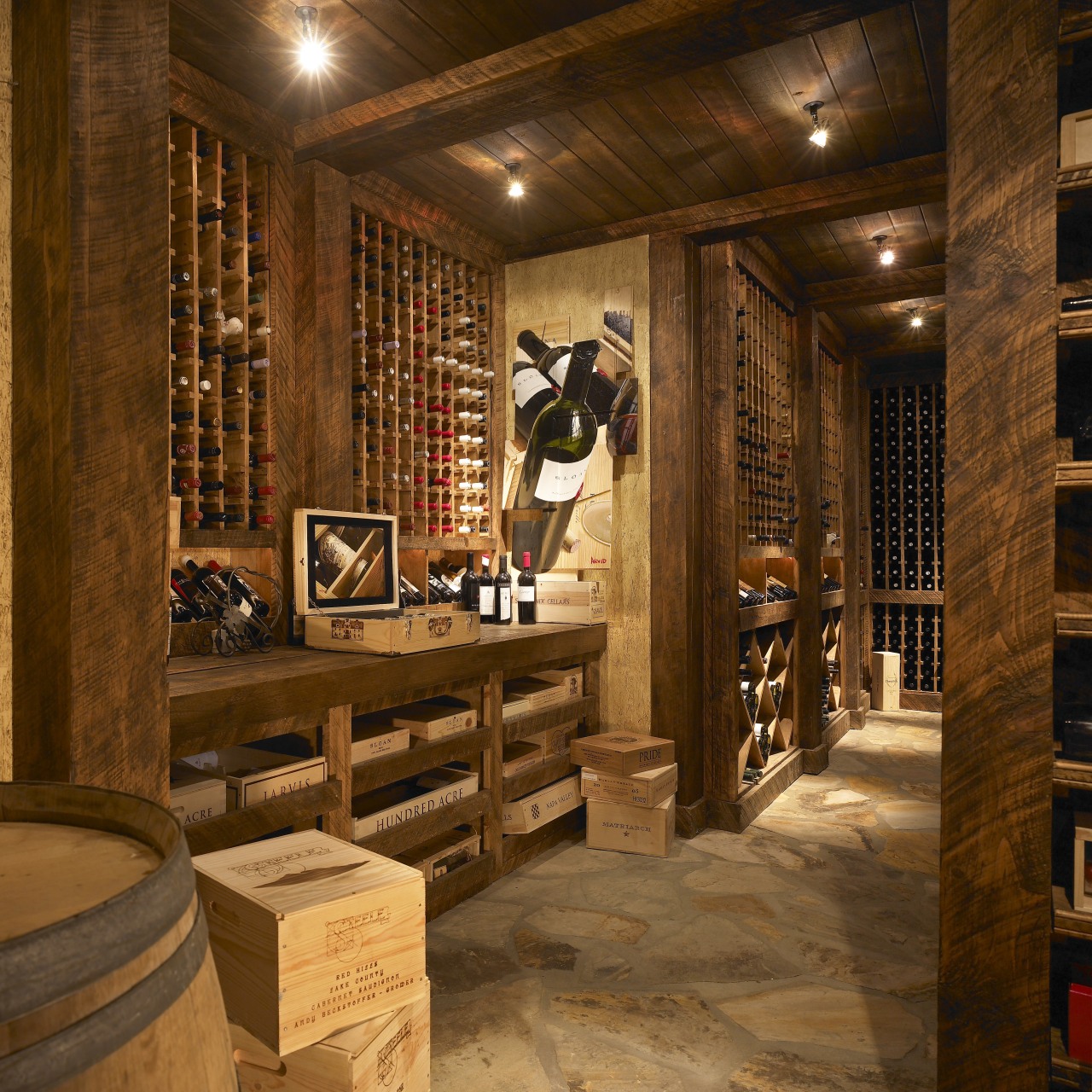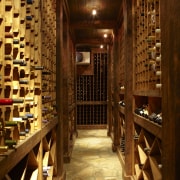Toast to tradition
Rough-cut wood, exposed joists and a flagstone floor bring an authentic feel to this basement wine cellar

For many serious wine connoisseurs, a cellar is about creating an ideal environment for storing wine, rather than a place for entertaining. This was precisely the case for wine artist Thomas Arvid and his wife Vanessa.
Thomas Arvid says he wanted a basement cellar built along similar lines to traditional wine cellars in France a simple, straightforward design with no pretensions or gimmicks.
"Many people make wine cellars very fancy, with cafe chairs and tables for wine tasting. But in reality a cellar is too cold for entertaining."

Working with interior designer Teri Duffy, Arvid chose to play up the raw simplicity of the basement, exposing the concrete foundations and rough-sawn structural columns.
"These materials have a subliminal effect," he says. "You instinctively feel you are in the bowels of the house, just as you would be in a traditional cellar in the wine country in France."
This effect is heightened by the exposed joists and floorboards, which form the ceiling. The boards and supports were stained, waxed and oiled to create the aged look.

"Although we needed to provide a huge amount of storage, which was a design priority, it was also important that the cellar felt like a wine room," says Duffy. "All the racks are raw wood, and the overall look is quite dark and wine-like."
Thomas Arvid's own artwork continues this theme there is a collage on a cellar wall made from old wine crates.
The cellar also complements the craftsman-style architecture of the house, which was designed to look as though it has evolved over time. Further continuity is provided by the flagstone flooring. This not only appears in the cellar, but also on the back patio and porch.
Credit list
Interior designer
Flooring
Builder
Story by: Colleen Hawkes
Home kitchen bathroom commercial design



